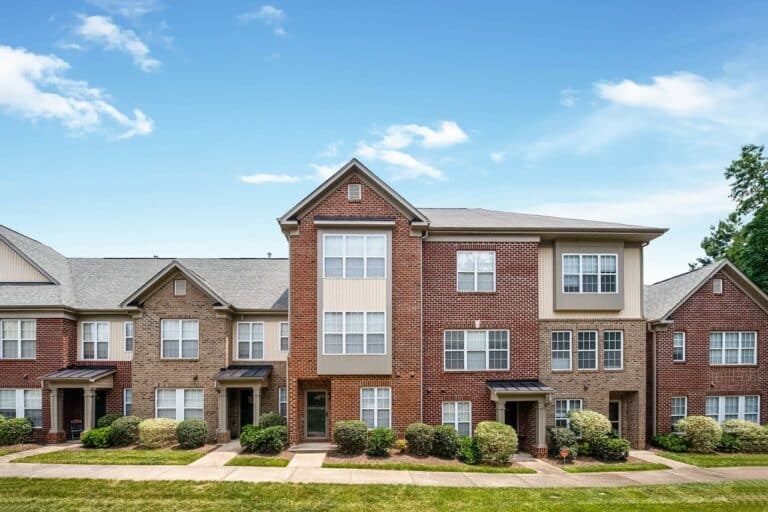MoveZen’s Professional Estimate of Your Rental Range [Not an Algorithm]
Our property management company was forged in the housing crisis of 2008-2010. During that time we saw an incredible shakeup in the rental market. Initially, rentals got slammed, but they quickly rebounded once it became apparent that no buyers meant a lot of renters. Those were wild times and still did not touch the earthquake rental housing experienced in 2020. We saw more fluctuations in the rental market last year than all years combined going back to 2010. The scorching hot rental market in smaller and cheaper cities is attracting investors and homeowners from the largest cities far and wide. Cheaper cities have long been a haven for the young and financially repressed generations, but that strategy has taken a huge hit to the deep alarm of renters who populate these value towns, mostly due to the cost of living
21 Tips to Take Great Rental Photos

Many landlords & property managers undervalue benefits gained from taking amazing photos. Many of the most common disappointing experiences as a rental investor can be minimized when you craft an exceptional rental listing presentation
Top 10 Tips to Maximize Your ROI (Return on Investment)

With the rental market getting more competitive, and top-notch tenants are getting harder to come by, now is the time to make sure your rental property creates the best return on investment possible
A Massive Location Shakeup
Many renters were looking for a safe place to escape to, and they wanted to get away from the big, overcrowded cities that are thought to increase the spread of infectious diseases. For that reason, sunnier climates have been clear winners. In addition, a truly historic number of renters are now working from home. They can live virtually anywhere, and are. Almost all large cities suffered major population declines, at least in the denser neighborhoods. A major complication from this is that people who are moving to the smaller cities often need to rent out the homes they’ve left behind in dense urban districts, and are frequently met with tough news
While things may be on the wane, it’s unlikely these trends will completely reverse. We’ve all heard the phrase “depression baby”, and terrible memories don’t easily fade. Work from home will normalize but doesn’t appear likely to return anywhere close to the old days. The inequality issue was also drastically exasperated in 2020, and that certainly won’t quickly unwind. We first covered this issue in late 2020 in detail at 2020 COVID-19 Housing Migrations
It Appeared Some Owners Were Throwing Darts to Set Rent Rates
The fluctuations in housing prices in 2020 were truly off the charts. Clearly the most turbulent rental market in modern history. We saw private landlords dramatically underpricing rental rates in the hottest markets, often by 20%+, and overpricing in major city markets, leading to painful vacancy costs. It’s a very difficult era for both property managers and landlords trying to set rental rates in extreme and unprecedented conditions such as we experienced in 2020, and have continued to a large degree into 2021. Presumably, whatever unwind process we experience will create its own set of challenges
An accurate rental rate estimate is one of the most important aspects of successful property management. It’s also one of the first steps to take when considering a move or investment home purchase. For this reason, MoveZen provides extremely accurate, no-commitment rental rate estimates for homes in the markets we cover. In an environment like 2020, and one that’s already continuing to some degree in 2021, having a seasoned pro price your rental rate options can easily save lengthy vacancy, or simply listing your home for less than it’s worth and leaving a lot of money on the table
Overpricing poses an even greater risk than underpricing and is typical when things normalize. We’ve seen this phenomenon in the rental market after hurricanes knocked inventory out of service and temporarily boosted rental rates to dizzying levels. It’s tempting knowing that a small market like Wilmington NC was on fire in 2020, to keep trying to drive prices higher in 2021. However, it’s more likely that we’ll see something of an unwind in the second half of 2021, which many property managers and landlords will fail to recognize until a home has sat empty for months. Because we list houses across nearly half a dozen major rental markets, we have the data and confidence to act on it even when the market is making historic moves in both directions.
Riding the Rental Price Brakes – List Too Low & Risk Anger
In the hottest markets where we operate, we realized early on that high listing rents were the only way to avoid a mad rush of desperate and aggressive applicants. When we set prices on the lower end, we were instantly overwhelmed with applications, and unable to keep up with the volume. Few things are more devastating than being declined for the 10th time on a home you truly love, so we viewed higher rental prices as the best of several bad options to limit renter disappointment. It was a bittersweet experience. Normally we’d relish the idea of excellent performance, but renter desperation due to housing shortages in 2020 was truly a terrible issue to experience. While the suburbs did quite well generally if they were near a higher crime area they often struggled mightily. There were even times our company,
with all the rental market data we utilize, could neither forecast nor even fully understand some of the factors that led homes to struggle One rental listing, in particular, encompassed that issue. It was a luxury home in downtown Raleigh that we had rented just 12 months prior for $3500 a month. It had almost no yard, was on a tight street that made turning around difficult, and also had a few rough neighbors on the block. We were able to secure such a high rent because it was effectively in the middle of one of the most desirable parts of Raleigh with easy access to everything. Listing into the teeth of COVID though forced us to cut the price to $2800 and we still barely received leads except surprisingly from NC State roommates for a “potential” August school year 5 months away. To say it was a strange year is of course an understatement
Roommates Explode & Make Tough Competition

Roommate rentals saw massive growth in 2020. It’s been an issue growing in size for years. In the past, most roommate rentals were actively in school, but that is hardly the case these days. Many highly qualified young professionals with great jobs are enjoying the benefits of shared living. In 2020 we saw groups of doctors, attorneys, and engineers opting to rent luxury houses.
These renters usually all have bulletproof credit reports, exceptional income, and the ability to pay larger deposits and secure cosigners when required. They’re probably the lowest risk renters when it comes to paying their rent since job loss is rare, unemployment is easily available, and they have savings or support even if those issues arise. Still, roommate rentals can be tough, especially for amateur property managers. While payment problems are rare, personality issues, broken leases leading to complicated rerentals, and more frequent moves are still quite common. Even the application and move-in process are substantially more complex since you frequently have 4 times the amount of communication and due diligence required. That’s not ideal for us, but the fact that roommate leases tend to lead to higher turnover is of real concern. Another common situation has been a mixture of some professionals and some students and these get even more difficult to handle effectively. Students still make questionable renters overall, though again payment is rarely of concern. The same drawbacks to renting to young professional roommates tend to be amplified dramatically with students, plus the added risk of large parties and general lack of respect for the property and rental manager rules. When landlords and property managers are faced with a mixture of student and professional applications the long-term drawbacks and benefits are hard to measure effectively. Our company also has serious concerns about sweeping restrictions on accepting roommates. Familial status is a protected class and while it’s not typically applied to roommate situations, it’s hard to imagine that one couldn’t make a case. In an age where youth are waiting longer and longer to have children, opting not to at all, and frequently simply cannot afford to live alone while rents are soaring, major discrimination could have devastating consequences for a large portion of today’s youth, and that is after all what fair housing laws seek to remedy. While not our first preference due to higher turnover and dramatically higher task loads, we have found that there are few better ways to maximize rent for our property investors. We’ve had immense success with our roommate rentals and rarely view them in a negative light when the basics of low-risk tenant qualification are all satisfied
Not All That Glitters Is Gold – Roommates Crowd Traditional Renters Out of the Most Desirable Homes

There is an extremely dark side to this proliferation of pooled income rentals and that is the fact that it drives rents up dramatically, makes the application process brutally cutthroat, and deeply exacerbates housing shortages currently affecting most of the country. While grouping renters together in a single unit may seem helpful, it’s the type of units that are the problem. The biggest housing shortages are occurring with critically needed 3 and 4 bedroom rental houses that roommates could never justify (and remove from the listing pool) on their own.
These however are highly sought out by young professional groups, and given the fact they aren’t afraid to pay a significant premium, usually have excellent income and credit across the board, they almost always crowd out several more traditional renters trying to support many people on one or two incomes. We’ll discuss more just how brutal the rental market has become for even slightly marginal renters in an upcoming article, but roommate proliferation has been a major contributor to one of the most important problems in our industry. This issue is unlikely to slow down, and owners renting their own homes should be prepared to deal with these difficult issues frequently
Another Major Issue Affecting Property Managers and Rental Investors is the Explosion in Sight Unseen Rentals
As with roommates, an active site-unseen rental market leads to massive challenges for the average renter, especially those with marginal credit or income. Many of these transplants are coming from much costlier rental markets, and especially in 2020 were frequently holding on to higher-paying jobs meant for lifestyles in those costly locations. These renters show boldness in securing unseen rentals that locals don’t see as necessary. However in hot housing markets that boldness can crowd others out. With homes frequently renting in days, sometimes instantly since so many landlords underpriced their listings, hesitancy was a near guarantee that you’d miss out on the premier properties. When the mere act of viewing a rental home puts you at a serious disadvantage, the playing field is treacherous, to say the least. Particularly in our smaller markets of Wilmington NC, Winston-Salem, and the suburbs of Raleigh, Charlotte, and Greensboro we fielded on a non-stop flow of desperate phone calls from local and distant renters who had watched dozens of desirable homes rent before they had a chance to complete a showing. These calls weighed on us, and we often found ourselves fielding difficult questions.
“When asked if someone should apply before seeing the rental, we had to say we can’t give that advice because if you apply and lose your application fee you’ll hate us, and if you don’t apply and lose the property you will too. It’s a brutal market out there and you have to weigh just how badly you want the property when making that decision.”
Jordan Davey
Then we’d have to ironically tell them how much we advise against site-unseen rentals. Why did we advise against site-unseen? While many novice landlords would view a site-unseen rental as a dream come true, that is almost guaranteed to be a mistaken assumption. MoveZen despises unseen rentals, and we require these tenants to sign a starkly worded disclaimer that clearly states we think it’s a terrible idea, they are likely to be unhappy, and they have no one to blame but themselves. It also clearly states that any aesthetic repairs requested are most likely going to be denied by the homeowner. While it’s not our approach, for many, there’s little motivation to make costly changes after a lease is signed, especially in the uncertain world of 2020-2021. A side effect of the boldness that comes with renting a home you’ve never seen in a city you know little about is that you’re also quite bold about complaining and attempting to rectify those poor decisions once on site. We also address this issue in our disclaimer by noting that in our 15-year history the majority of our most unreasonable, unrealistic, and unfair renters began with site-unseen.
Our company excels in excellent communication and clear efficient terms. We also provide high-resolution wall-to-wall 3D virtual tours for most of our homes, and still had several absolute nightmare experiences from site-unseen renters over the past 12 months in particular. Approximately 25% of the calls we fielded were for renters who had no intention of visiting the area before signing a lease
One situation we dealt with in 2020 began with a phone call where we begged them not to rent site-unseen, gave them a verbal warning at first contact regarding the high likelihood of unhappiness, and included a stark disclaimer in the lease. Despite all of that this renter paid 3 months of rent within days of contacting us, then mounted an aggressive attempt to void the entire process literally the first day they arrived in town. Despite getting a refund of over $4000 due to our ability to quickly rerent the home, this person still left us a negative review filled with lies and even a couple of truths regarding the fact they intended from the very first moment to try and game the system. Something they held us in contempt for not allowing. Bear in mind the owner they were confidently trying to defraud wasn’t a huge Wall Street REIT, it was a local mom-and-pop landlord. The reason they wanted a full refund and release from the contract? The rooms were too small. Ironically we provided them with a 3D virtual tour that helped them find the confidence to rent unseen, and our ultra high-tech 3D scans have an extremely useful and accurate tool specifically for measuring room sizes. This parable is a perfect example of the challenges we see with most site-unseen leases
Despite this, we don’t forbid the process because we’re one of the larger companies in most of our markets, and if we did so, many renters who don’t have the resources to make advanced trips to rental search would be frozen out of the market, adding even more to the massive challenges renters face in 2020-2021
Of course, such a large increase in sight-unseen rentals is largely driven by a huge influx of out-of-state renters. We covered this issue in depth in the first part of this series,
2020 COVID-19 Housing Trends
Rental Search Time is Tighter Than Ever By A Long Shot
As if these issues haven’t created enough major challenges for today’s renters, there was another major complication that came up for renters in 2020, and that was the tiny window of opportunity to find and secure a home. Most renters, seeing the challenges posed by a global pandemic, began their rental searches months in advance. However, one of the biggest challenges born from the pandemic was access to homes. Active renters obviously didn’t want a parade of strangers (more than usual), and agents, landlords, and managers didn’t want to be out meeting people either. Add to that the “COVID excuse” where anyone who didn’t feel like dealing with something simply mentioned they had been exposed, and it’s easy to see why homes are not being listed months in advance of move out. To put it in perspective, our company utilizes all the most cutting-edge property management technology, and it still made no sense for us to list well before a tenant moved out. Here was our basic process in 2020, and still to some degree well into 2021
If the home was in great shape, and especially if we already had a 3D virtual tour, we were willing to list 14 days in advance. Why not sooner you might ask? Because as we mentioned above the market was generally scorching hot, and we were slammed with inquiries and applications. We were also on a hiring freeze due to the increased risks and challenges, and everyone in our company was stretched as thin as they could handle. If we listed homes earlier, we would be inundated with huge amounts of site-unseen rental applications, something we already noted is considered far from ideal, and a constant flow of renter inquiries needing to move sooner than the home was available. Finding a pleasant home is a major priority, especially during a pandemic requiring isolation, and it’s insanely frustrating if you have to move in 2 weeks, and see the perfect home hit the market with a 3-week available date. In that environment the longer a home is publicly advertised, the more applications you’ll receive. Since fair housing requires us to process most applications, that meant more financially strapped renters lost out on desperately needed housing, as well as large amounts of application fees. So in effect, to avoid appearing predatory and creating an environment where huge numbers of our customers were left furious and disappointed, we had to keep an extremely tight hold on the public marketing process. Also, as mentioned we pushed listing rates to extreme levels to ensure that we could control and handle the flow of renter interest we received
Move Fast Or You Won’t Get a Premium Rental Home
Of course, that was our process for homes in great shape. How about the others? Luckily we have phenomenal tenants and most of our homes did fall into that category, but when they didn’t the opportunity to secure these homes tightened even more dramatically. We would wait to list until the home was fully turned over and updated. At that point, the home would go live while being available for self-access showings. A process where we utilize a scheduling system that requires potential renters to upload a copy of their ID, register for a unique code, and access an electronic lockbox at the property. All possible without ever coming into contact with a rental manager or existing tenant. Property management in the age of COVID is dramatically harder than in the past, and tools such as this one, in particular, offered us a massive edge against owner-managed rental listings who had little choice but to show their rental. This process played out over the course of hours on properties that were well-positioned for pandemic life. The home would go live on the rental market, and renters would get an instant email notification, a standard feature of major rental websites. They could then instantly schedule a showing, hop in their car and view it in person without human interaction, then apply on their mobile phone while sitting in the driveway. This isn’t hyperbole, it happened constantly for more than half of 2020, and still occurs to a lesser degree in late March 2021. In these instances, it was sometimes close to 48 hours from the time a home hit the public market to the time we had a hold deposit. Curious what the number 1 factor is for us to decide on two similarly qualified applications? Who’s moving the soonest. This meant that applying for a popular vacant home when you couldn’t move for 30 days was nearly futile. For the first half of 2020, our average time from listing to move in was under three weeks. Many of today’s renters are very savvy though, and they quickly figured out how to use these trends, as well as exploding inequality to their advantage
Wondering What Your Home Can Rent For On the MoveZen System?
Get a custom accurate rental rate estimate from MoveZen Property Management
What Tools Might a Well-To-Do Renter Utilize to Deal With These Issues?
Two particularly powerful options have been weaponized in the age of COVID and are nearly as prevalent today as they were 12 months ago
It begins by applying for multiple properties. What better way is there to increase your odds of securing a decent home than applying instantly for every promising home that hits the market? We didn’t notice how ubiquitous this tactic had become until after we took note of an extremely high cancelation rate. It was odd to have applicants canceling approved applications on extremely hot properties when we often had 5 backup applications ready to be revisited. This left little doubt that these renters were getting approved for slightly more desirable homes. This occurs to some degree all the time, but it became a clear trend in 2020
Another major trend that emerged in 2020 that is still very common is for renters to take possession and begin paying rent long before their earliest possible move date. For the first time in our history, it was common for homes to sit empty for a month after a lease had begun. We even had to enact new policies and procedures to deal with these unoccupied homes. There were several instances where tenants took homes nearly 2 months in advance of their move. We do not like unoccupied homes due to liability risks, but this is a deeper concern. Something feels wrong about so many homes sitting empty in an insanely competitive market
These are tools that are only available to the most well-off members of society, even when they’re applied to a median rent starter home. Inequality isn’t measured simply by income or net worth, subtle differences place a huge role, and the amount of these differences can be just as concerning as the magnitude. Since COVID, at least in the housing market, the benefits of being in the have’s category have grown exponentially
The Massive Tech-Savvy Advantage
One of the primary topics in this account of “housing in the age of COVID,” is the role technology has played. Put simply, for those with a strong grasp of technology these changes have provided a dramatic edge against the competition. For those who struggle with technology, you are now at a deep disadvantage. Referring back to our story of how a renter could easily secure a home within 48 hours of it hitting the market, let’s play out that same process for someone who isn’t tech-savvy. A home hits the market at 11 am on Monday. If you’re lucky you will find it in your routine nightly searches. You bookmark the home and begin calling the property manager in the morning. While we made answering the phones a top priority since COVID, most managers all but turned them off. For the rest, especially owner-managed listings, the volume of inquiries has been simply overwhelming. By 3 pm you’ve realized you’re not likely to get what you need via phone, and you begin emailing. We’re now 28 hours in, relatively late in the afternoon, and your email is going to be pushed to the next day by most property managers, professional or amateur. At least for us, we start the day with maintenance, and an initial sweep of applications so we can make sure they’re moving along as fast as possible. On a busy day, we might not be capable of handling brand new renter inquiries until mid-day. Since most of our inquiries come in the form of high-tech software-managed showing requests that don’t require a lot of attention, it puts these direct inquiries in a secondary position. We’re now past 48 hours, and the home you inquired about is now rented, and you have yet to even receive a response. We moved mountains in 2020 trying to be as fair as possible, and even our company was unable to save large numbers of potential customers from this fate
While age is probably the greatest factor in technology-induced housing challenges, social status also plays a large role. Add this to the litany of issues we’ve already covered, and being slightly in any “have nots” category usually meant having no decent housing option…
Another COVID-19 Mixed Bag of Feelings & Results
We are one of the largest companies in most of the markets where we operate, and despite that rarely have more than 10 homes available at any point since COVID began. There was a period this summer where we effectively had none, and even in March of 2021 we only have one available home in our Wilmington market. A fact that’s truly incredible considering we are not in the strongest part of the season yet. Still, general inventory was rarely that bad. Since we have been able to maximize every possible benefit from the changing housing market, our inventory levels and consistently strong results were not the standard. We usually have a significant technology edge over self-managed landlords and our professionally managed competition, and that has never been a more important factor than during last year. As we noted, 2020 wasn’t all great for rentals and if you were not also on top of the latest data, the nuance in housing trends, unbiased rental pricing, and other professional management concepts, it was common to struggle like never before. There are a lot of factors that come into play regarding our results, and it isn’t exactly indicative of the general market because we were well positioned even before COVID began, and have settled into these changes in many ways better than BC (before COVID). Whereas many of our competitors are learning about cutting edge rental technology for the first time in 2021, and DIY property managers can’t justify the expenses, we had been offering contactless showings, 3D virtual tours, automated scheduling, premier photographs, digital signatures, and more of the COVID hallmark technologies for nearly a decade. Furthermore, we dramatically increased our availability via phone, response times, and overall customer service. We were particularly obsessive about getting back to renter leads extremely fast, and we often approved an application before many competitors had even responded. While many others appeared to never answer their phones, we saw an opportunity to take our company to the next level regarding our availability, and customers frequently responded with deep gratitude. In a market that was often a whirlwind, we spent a lot of time coaching them with tips to navigate the unique landscape. The combination of these pre and post-COVID evolutions led to an extremely “successful” year for us despite a much tougher landscape. A large part of that was due to an amazing response from our in-the-trenches property management staff. Working remotely has suited almost all of them extremely well, and they returned their gratitude with exceptional and consistent results
2020 Forced Us to Face Troubling Questions

2020 forced us to face troubling questions regarding what it means to be “successful” in rental housing. We’ve already noted that we have high credit standards, pushed rents as hard as they could go in a strong market, and squeezed nearly every possible efficiency out of rental management. All in an age of the worst housing inequality in a generation. We put “successful” in quotes because it doesn’t feel all that great at times. If we were selling iphones success would be obvious, but when success means exacerbating such a critical problem, decisions are much cloudier.
We’ve Spent Most of the COVID Age Firmly in a Catch-22
If we don’t push rents higher we’re flooded with applications of which we will have to collect fees and decline 99%. There’s little more disappointing than seeing your dream home in your budget, and never having a real chance to secure it. We felt it was slightly better and much more efficient to simply list with rates that only the most motivated would seriously act on. While we have high credit standards and tough payment rules, we also rarely have to evict tenants and even in 2020 only had a small handful run into major trouble. Lax and inconsistent qualification and payment rules typically lead tenants astray, and once they fall behind the odds of an eviction rise dramatically. There is little more devastating than suffering an eviction
Efficiency just might be our single greatest attribute, and something we’ve long felt was a benefit to the housing market in general. Inefficiency is waste, and removing it from the equation has to be good right? In preparing for an interview with a UNC graduate student researching the housing crisis, we were point-blank asked if we had issues with our role in the housing crisis. Our initial answer was no because we can’t control the very powerful forces at play, and our focus and success have come mainly through efficiency. Immediately following though the doubt set in and no turned into maybe a bit, kind of, and finally yes. Primarily the painful realization that while we do remove inefficiency from the rental market, it mainly benefits the homeowners. There certainly are powerful forces at play we can’t hope to control, but that doesn’t absolve. One thing that helps is the huge amount of charity work that our company is a part of. Over the past five years, we have donated over twenty thousand dollars to mostly local charities in our markets, as well as had at least fifteen thousand of that matched by corporate offerings. These initiatives will grow as fast as our company does
Our simple philosophy regarding the problems with the housing market is that the bad players are classic crony capitalists, and the “helpers” mostly target the symptoms and often do more harm than good. That has proven to be a painful combination. It’s like treating liver damage for an alcoholic. Sure you need to, but if you don’t deal with the addiction you’ll have little success, and if you are enabling them to drink more you are likely doing more harm than good
Here’s a Superficial Yet Devastating Rundown of One of the Most Egregious Root Issues Affecting Housing in America Currently
Rental Repairs & Maintenance Is Our Biggest Challenge in 2021
Another huge day-to-day issue in housing in the COVID age is the increased amount of repairs required when renters never leave the house, and the skyrocketing costs one might expect under those circumstances. Even before COVID repair prices were booming like never before, an issue we covered extensively in 2019 in our article “The Factors Behind the Relentless Rise in Rental Investment Repair Costs.” All those same factors are as relevant as ever except now renters spend 100% more time in the home and virus shutdowns have decimated supply chain logistics. Both labor and materials are in short supply. In addition, we’re in the midst of a massive shift in HVAC coolant standards and AC systems have much shorter lifespans than in the past. Homeowners have also renovated their homes at an astounding pace to accommodate home schools, home offices, home gyms, and a desire for fresh air and sunshine. These customers will pay top dollar and typically provide the primo jobs that property managers rarely enjoy dealing with. It’s easy to see why our biggest struggle over the past 13 months has been getting repairs handled at a decent value as quickly as our high standards and demanding customers require. This struggle has been so concerning and critical, that we’ve firmly decided that we must have an in house maintenance division if we hope to continue providing the best property management results possible
Don’t Neglect The Move-In Experience
The renter move-in experience has gotten much tougher. Because we have such a comprehensive advertising and showing system we have long been able to find great renters despite leaving a lot of minor issues with our rentals. We take a firm view toward prioritizing “hard, long-lasting” upgrades over shorter-term expedients. Before 2020 we often got away with murder renting homes to great tenants for top dollar, despite very iffy paint and carpet. There was nothing nefarious here, we just reeled in so many interested renters we didn’t have much trouble finding those that prioritized the same updates that we did. The fact we’re very pet-friendly played a large role, but these days most managers have finally figured out just how lucrative it almost always is for pet-friendly rental owners. At least for now, COVID trends have largely rendered that approach a bad idea. Instead, we have most of our landlords swapping carpet for “hard, long-lasting” vinyl plank. Tenants these days are as picky as ever. Often they’re paying historically high rents and expect attention to detail, though our downtown renters who were getting exceptionally great deals were some of the toughest. These tenants were of course taking advantage of an extremely tough rental market. Vacant homes get messy surprisingly fast, and in the past, we didn’t typically touch up clean prior to move-in. Those days are long gone as well and tenants expect a cleaned and sanitized home before move-in. It’s one of their top priorities these days and something that should not be ignored. It has always been a bad idea to leave obvious issues unrepaired, but now that method frequently subjects landlords to the rage many renters exhibited in 2020. To avoid that issue our policy has always been to have tenants clearly outline what repairs they require before signing the lease, and the requests have grown dramatically of late
The issue of rising repair costs, more wear on homes, and more demanding tenants has taken a solid bite out of the gains made on rents. It is for these reasons we decided to take on a maintenance division. This is one efficiency that will surely benefit our owners (lower costs), as well as our tenants in our ability to get more done faster as a result of lowered costs and more control over the process

Pets have become ubiquitous since the lockdowns began. We have long said that restricting pets is one of the worst financial decisions a rental investor can make, and that is more true than ever. BC nearly 75% of renters had some type of pet. At this point, it must be approaching 85%, and it’s frequently several
You don’t have to be an economist to see that barring 80+% of your potential customers at the door will put serious pressure on your performance. What apparently isn’t as easy to grasp is that this cost is usually more than if the worst-case scenario played out with literally most of your leases, something that for us is equivalent to the sun not rising
Tensions ran high in 2020. We mentioned that tenants were more demanding than ever by a wide margin, but owners and vendors often raged irrationally as well. We had real issues at times, but we also saw some really rise to the occasion. It was truly the best of times and the worst of times in property management and we deeply appreciate those who helped make it the best.
We experienced software and internet issues nearly non-stop in 2020 and still do consistently well into 2021. Nearly everything we use has struggled since the lockdowns began. We mentioned that we were nearly 100% cloud-based, and it’s safe to say the cloud was stretched to its limit for most of 2020. This was one of the biggest issues we faced as a very high-tech company working exclusively remotely. Much worse though would have been rolling out these procedures amongst such chaos so we still fared well with this general problem
Summary
We’ve outlined a lot of challenges that began with the age of COVID, and have only diminished slightly despite a fast-improving outlook. Many of these are blatantly market-based, many were unique to professional property managers, but most were a solid mix of both. We consider this COVID housing series to be the most important we’ve ever undertaken, and a few themes play out clearly. One that should not be lost on homeowners is that property management in the COVID age is dramatically harder across the board. Not just for professionals, but for DIY self-managed rental owners much more. The technology that we employ is extremely expensive and hard to implement. The repair process is a nightmare for almost all, from simply finding vendors, to getting them out as quickly as your tenants deserve, to keeping the costs reasonable, to knowing what costs can be justified in an ever-changing market. Patience runs thin more often than not. Success is tough to define. Payment problems are at all-time highs, and market forces even within various parts of the same city are harder than ever to understand. If there was ever any doubt before, there isn’t now. If you can identify a clearly superior property management company and you work full time, then you absolutely should hire that company today. The rest of you most likely should as well because one of the number one mistakes landlords make is equating saved money with superior performance. It is statistically nearly impossible for the average landlord to get better long-term bottom-line results than we can, even after our expenses are accounted for, and by a wide margin. In 2022, hire a pro











